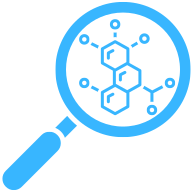Biostatistics, a critical field in modern healthcare and research, relies heavily on specialized software and tools. This blog post delves into the world of biostatistics software and tools, exploring their features, applications, and how they revolutionize data analysis in biomedical research.
The Importance of Biostatistics in Healthcare
Biostatistics plays a pivotal role in healthcare, providing the backbone for evidence-based medicine. It involves the application of statistical techniques to scientific research in health-related fields, including epidemiology, genetics, and public health.
Biostatistics helps in designing robust research studies, guiding data collection methods, and analyzing and interpreting the resulting data. It also aids in making predictions about diseases and health trends. Without biostatistics, it would be challenging to understand the causes of diseases, evaluate the effectiveness of treatments, or make informed decisions about healthcare policies.
The advent of technology has further enhanced the role of biostatistics. Today, numerous software and tools are available to assist biostatisticians in their work. These tools simplify complex data analysis, making it easier to draw meaningful conclusions from vast amounts of data.
An Overview of Biostatistics Software and Tools
Biostatistics software and tools are specialized applications designed to handle the unique demands of health-related data analysis. They offer a range of functionalities, from data management and statistical analysis to graphical representation and report generation.
One of the most popular biostatistics software is R, a free software environment for statistical computing and graphics. It provides a wide array of statistical techniques, including linear and nonlinear modeling, classical statistical tests, time-series analysis, and more.
Another widely used tool is SAS (Statistical Analysis System), known for its advanced analytics, multivariate analyses, business intelligence, and data management capabilities. Other notable software includes SPSS (Statistical Package for the Social Sciences), Stata, and Python, each with its unique strengths and features.
Features and Applications of Biostatistics Software
Biostatistics software and tools come with a host of features that facilitate data analysis in biomedical research. They offer a variety of statistical methods, including regression analysis, hypothesis testing, survival analysis, and more.
These tools also provide data management capabilities, allowing users to clean, transform, and manage large datasets. Moreover, they enable the visualization of data through graphs, charts, and plots, making it easier to interpret and present results.
In terms of applications, biostatistics software is used in a wide range of health-related research. It is used in clinical trials to analyze trial data and determine the efficacy of treatments. In epidemiology, it helps in studying disease trends and patterns. In genetics, it aids in mapping and sequencing genomes.
The Impact of Biostatistics Software on Research
The impact of biostatistics software and tools on research is profound. They have revolutionized the way data is analyzed, making it possible to handle large datasets and complex analyses that were previously unmanageable.
These tools have also improved the accuracy and reliability of research findings. By automating calculations, they reduce the risk of human error, leading to more accurate results. Moreover, they allow for reproducibility of analyses, a key aspect of scientific integrity.
Furthermore, biostatistics software has made research more efficient. It has streamlined data analysis, saving researchers valuable time that can be used for other aspects of their work. It has also made data analysis more accessible, enabling researchers with little statistical knowledge to conduct sophisticated analyses.
Future Trends in Biostatistics Software
The field of biostatistics software is continually evolving, with new tools and features being developed to meet the growing demands of health-related research. One key trend is the increasing use of machine learning and artificial intelligence in biostatistics software. These technologies can automate complex analyses and provide more accurate predictions.
Another trend is the development of cloud-based biostatistics software. These tools allow for remote access to data and analyses, making it easier for teams to collaborate on research projects. They also provide scalable storage and computing power, accommodating the growing size of health-related datasets.
Moreover, there is a growing emphasis on user-friendly interfaces and intuitive design in biostatistics software. This trend aims to make these tools more accessible to researchers with limited statistical knowledge, democratizing data analysis in health-related research.
Choosing the Right Biostatistics Software
With the plethora of biostatistics software and tools available, choosing the right one can be a daunting task. The choice depends on several factors, including the specific needs of the research, the size and complexity of the dataset, and the user's statistical knowledge.
It's crucial to consider the software's capabilities in terms of statistical methods, data management, and visualization. It's also important to consider its ease of use, support and documentation, and community of users.
In conclusion, the right biostatistics software can greatly enhance research quality and efficiency. It's worth investing time and effort in exploring different options and choosing the one that best fits your needs.
Wrapping Up: The Power of Biostatistics Software and Tools
Biostatistics software and tools have transformed the field of health-related research. They have made it possible to handle complex analyses and large datasets, improving the accuracy, reliability, and efficiency of research. As these tools continue to evolve, they promise to further revolutionize the way we understand and address health issues.

